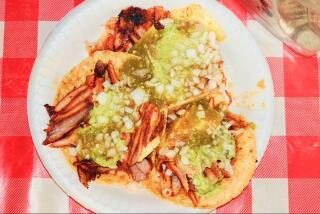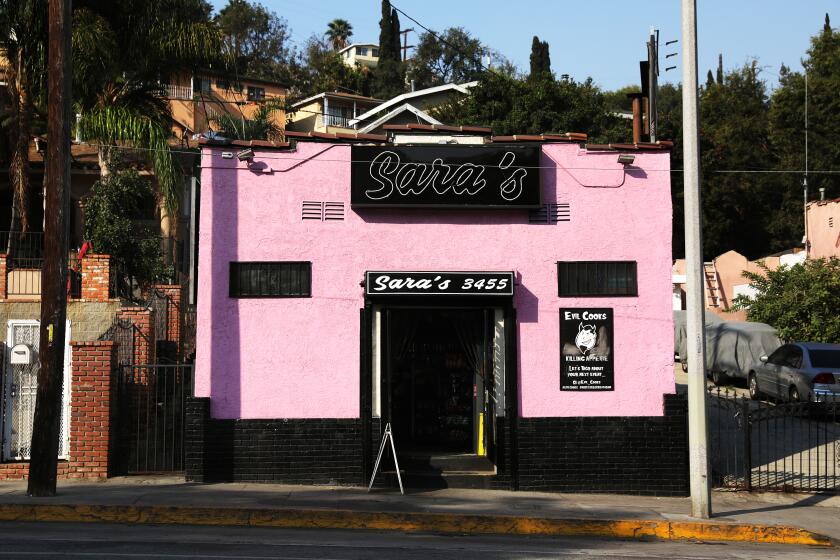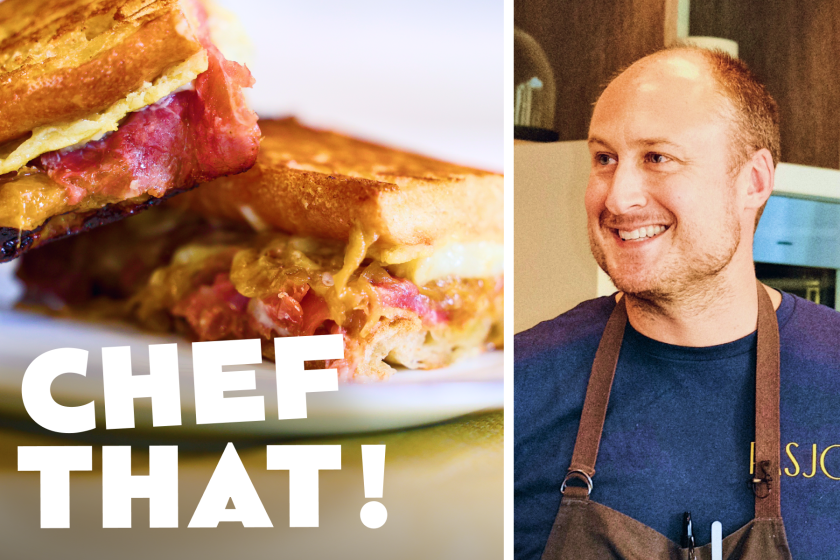‘Grapevine’ Commercial on TV : Raisins Strut Their Stuff for Jazzy Image
Don’t ask ad writer Seth Werner how he knew.
He just felt that a commercial with a conga line of hip raisins strutting to the song “I Heard It Through the Grapevine” would help improve the image of a food that some considered dull, uninteresting, even wimpy.
“We do a lot of this by the seat of our pants,” Werner conceded in an interview. “It’s a pleasure to see we guessed right.”
The commercial tagged “Late Show” was first broadcast Sept. 14 and is scheduled to run through March as part of a $7.5-million campaign. Another ad is being prepared that will first appear on network television Nov. 16.
The music starts slowly and we watch from a distance as raisins march across an end table laden with snack foods beside a couple on a couch. Then the camera moves in close.
An announcer introduces them simply: “California raisins from the California vineyards.”
A raisin moonwalks over to a gum package to pop a bubble. Three raisins do a synchronized step, and the outclassed pretzel twists, potato chips and cookies try to imitate it.
“Oh, don’t you know I heard it through the grapevine?” the raisins sing as they dance back into their box.
Will Vinton, the raisins’ creator, said he’d been told that since the spots started appearing, high school students have been doing the raisin shuffle and some children asked for raisin costumes at Halloween.
California’s raisin growers say they are heartened by the initial reception but note that it’s too early to say if sales have responded.
“We know from the letters and the phone calls we are getting attention--people see the commercial and they like it,” said Robert Phinney, director of advertising and promotion for the California Raisin Advisory Board. The trade group, based in Fresno, represents growers and packers who handle nearly all the nation’s raisin production.
Phinney said sales growth had slowed in recent years and the raisin board asked its advertising agency, Foote, Cone & Belding-San Francisco, to find out why.
“We found that people understood what raisins were good for, but that people didn’t have a positive emotional image of them,” said Veronica Kludjian, who supervises the raisin account at Foote, Cone. The absence of such a connection, such as the Marlboro man in cigarette advertising or the “Miller time” brand of leisure in beer commercials, she said, was hurting sales.
The growers wanted advertising that would make the connection, particularly with people who had liked raisins in the past but quit buying them.
Copywriter Werner and Dexter Fedor, who has since left Foote, Cone, decided against using a celebrity. “We thought, ‘Why not give raisins a personality of their own?’ ” Werner said.
He said the song was a natural fit. Raisins are dried grapes, and “Grapevine,” capturing the hip Motown style of the ‘60s and ‘70s, had become a hit all over again through the movie “The Big Chill.”
Werner wanted clay animation, a process used in films and music videos. But it was expensive, and the agency had to sell it to the raisin growers.
With a tape of “Grapevine” playing and Werner dancing the part of a “supercool” raisin, the admen presented their idea to about 40 growers last spring.
“They took a vote and said, ‘Go do it,’ ” Werner said.
The ad makers turned to Vinton, whose 12-year-old production company in Portland, Ore., has created clay animations for commercials for Domino’s Pizza, Nike sporting goods, Beneficial Finance and Kentucky Fried Chicken.
Everything in the raisin commercial is made of clay, but the stars are the two dozen or so clay raisins, each seven to eight inches tall, weighing about 1 1/2 pounds and sporting eyes, eyebrows, arms, legs and mouths.
Aside from white gloves, no two are alike. They wear sneakers of different colors. Some are fat and others thin; some bemused and others smiling; some with sunglasses and others without.
Shooting an animated spot is excruciatingly slow.
A still camera records a single frame, and then characters are moved into another position. An eyebrow may be raised, a mouth may be opened, arms and legs are repositioned to give a sense of movement.
Then the camera records another frame.
The commercial was shot at a rate of 24 frames per second, meaning that 720 such scenes had to be arranged by hand. It took five weeks to shoot.
The ad agency filmed professional dancers improvising movements to the song and then replicated those movements with the raisins.
More to Read
Eat your way across L.A.
Get our weekly Tasting Notes newsletter for reviews, news and more.
You may occasionally receive promotional content from the Los Angeles Times.










